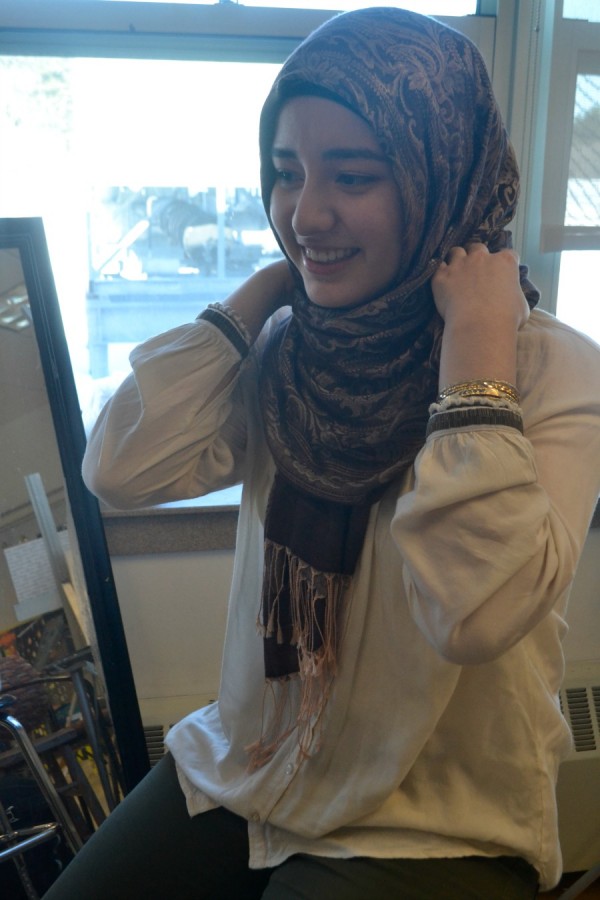The Hardships of Hijabs: When Style and Stereotypes collide
Senior Nargis Rajai wears her hijab as part of her Islamic culture.
February 24, 2015
One of the first things many notice about senior Nargis Rajai is what she wears on her head. Often brightly colored or patterned, Rajai, like many other Algonquin students, wears a headscarf for religious and personal reasons.
Muslim females often wear head scarves, also known as “hijabs.” The hijab represents the requirement by the deity Allah that both men and women must remain modest.
Nargis Rajai chooses to wear a hijab for her own reasons.
“It’s not just an outfit you put on, it comes with a whole new and refined lifestyle,” Rajai said. “As you can see by some of the other girls at school who are Muslims that do or do not wear hijabs, they’re not pressed to.”
There are close to one million Muslim women in America, and of those women, 43 percent choose to wear hijabs.
“It’s simply a way of showing respect for yourself and others: simplicity, modesty, and level of devotion and commitment to God,” Rajai said. “To me, my female relatives had such an impact on me that immediately I saw the hijab as beauty and nothing else.”
The New York Times stated in an article from August 2015 called “A Makeover for the Hijab, via Instagram” that for those who choose to wear the hijab, aside from it showing religious devotion, it has become a way to show self expression and to accompany cultural identity. Despite contradiction, an increasing number of Muslim women are blending personal style and the religious spirit of the hijab. It is a freedom in respect of choosing to wear it or not.
“By wearing a scarf I’ve just become more connected to who I am as a person, and have seen the spectral range of the human condition as a whole by their reactions of my identity,” Rajai said.
According to an NPR article titled “Lifting The Veil: Muslim Women Explain Their Choice” from April 2011, the gap between women who choose to wear headscarves has never been so prominent. Women that choose to “unveil” say the choice is often a personal matter or for a religious reason.
“It just sucks that some people are ashamed of it [hijab] and hide it when there’s really nothing to be embarrassed or shy about in the first place if it makes up who you are or who you want to be,” Rajai said. “Of course I feel stereotyped and self-conscious, but it doesn’t stop me from doing what I morally believe is right.”
From the aforementioned New York Times article, it was also reported that younger Muslim women are changing the way the hijab is viewed, claiming that modesty does not have to be unfashionable.
Rajai tries to incorporate her hijab into her own personal fashion.
“My style isn’t dependent on a certain trend or cultural group, I sort of mix it up and take ideas from everywhere and try to really coordinate my outfits with the different ways other cultures wear their hijabs,” Rajai said, “I especially like the way the Turks wear their hijabs because it’s easy to create when you’re on the go, and looks super cute.”
Ultimately, the hijab is a choice.
“I choose to wear the hijab because the purpose and symbol it represented for me went hand in hand,” Rajai said. “I just want people to be tolerant, aware, and accepting that what I wear doesn’t define me.”









